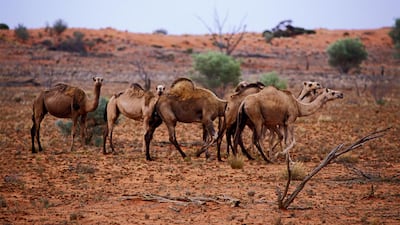The Australian state of South Australia is set to begin its first mass cull of feral camels, as dry conditions increasingly push the animals into conflict with communities.
The state’s Department for Environment and Water estimated that 10,000 camels were flocking to water sources, destroying native vegetation and marauding communities.
Thirsty camels are also causing damage to air-conditioners on the outside of buildings as they attempt to access water, according to the Australian Broadcasting Corporation.
Anangu Pitjantjatjara Yankunytjatjara Lands manager Richard King said camels could smell water from up to 5 kilometres away and were coming right into communities to find it.
"Even the moisture that your air conditioner generates will attract them, and when you've got four or five animals really wanting water — they're quite capable of breaking air conditioners," he told the ABC.
"Some people, in this sort of weather, are unable to put their air conditioners on, for fear that the animals are going to attack their air conditioners for their moisture."
Camels are also known to contaminate water supplies, rip dripping taps from walls and destroy public toilet facilities.
Mr King said animals gathering near communities presented a window of opportunity for a cull.
"It gives us an opportunity to get them while they're all together, because generally they'll go and move around the desert in smaller herds," he said.
Between 4,000 to 5,000 camels are expected to be shot from helicopters by professional hunters over the next week.
Australia’s culls have previously caused controversy among animal welfare groups and camel-loving cultures. In 2010, camel enthusiasts launched an online campaign to try to save thousands of camels by airlifting them to safety in the Saudi Arabian desert.
A DEW spokesperson said the animals "will be destroyed in accordance with the highest standards of animal welfare".
About 10,000 camels were first introduced to Australia in the 19th century to be used as pack animals and for exploration missions to the outback. But the feral population has since grown out of control with hundreds of thousands estimated to be roaming freely and causing extensive damage to native vegetation and cultural sites.
Traditional owners in the APY Lands have in the past mustered the animals for sale, but populations have grown too large in recent years.

